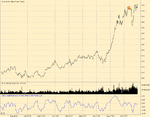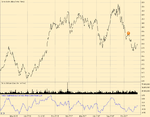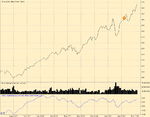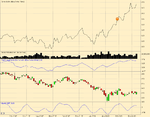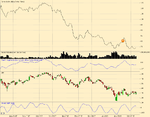I was motivated to start this thread by the following article
Momentum buying can beat the stock market - Telegraph
which pretty much confirms what I had previously thought about relative strength investment/trading strategies ie they do very well in bull markets and conversely relative weakness is an important factor in short stock selection in a bear market.
It seems that all those "idiots" buying Google or such at "absurd" valuations and P/Es are not so stupid after all.
RS strategies (or strategies with RS as an essential component) have been around for a long time and strongly advocated by the likes of O'Neal, Slater etc.
In this thread I would like to discuss stock screening techniques for such strategies and I hope to attract some other contributions or criticisms. Combining them with value screening would be a real plus.
This thread and any lists of stocks on it should not be confused with Greys strong and weak stocks and how to choose them.
Momentum buying can beat the stock market - Telegraph
which pretty much confirms what I had previously thought about relative strength investment/trading strategies ie they do very well in bull markets and conversely relative weakness is an important factor in short stock selection in a bear market.
It seems that all those "idiots" buying Google or such at "absurd" valuations and P/Es are not so stupid after all.
RS strategies (or strategies with RS as an essential component) have been around for a long time and strongly advocated by the likes of O'Neal, Slater etc.
In this thread I would like to discuss stock screening techniques for such strategies and I hope to attract some other contributions or criticisms. Combining them with value screening would be a real plus.
This thread and any lists of stocks on it should not be confused with Greys strong and weak stocks and how to choose them.

